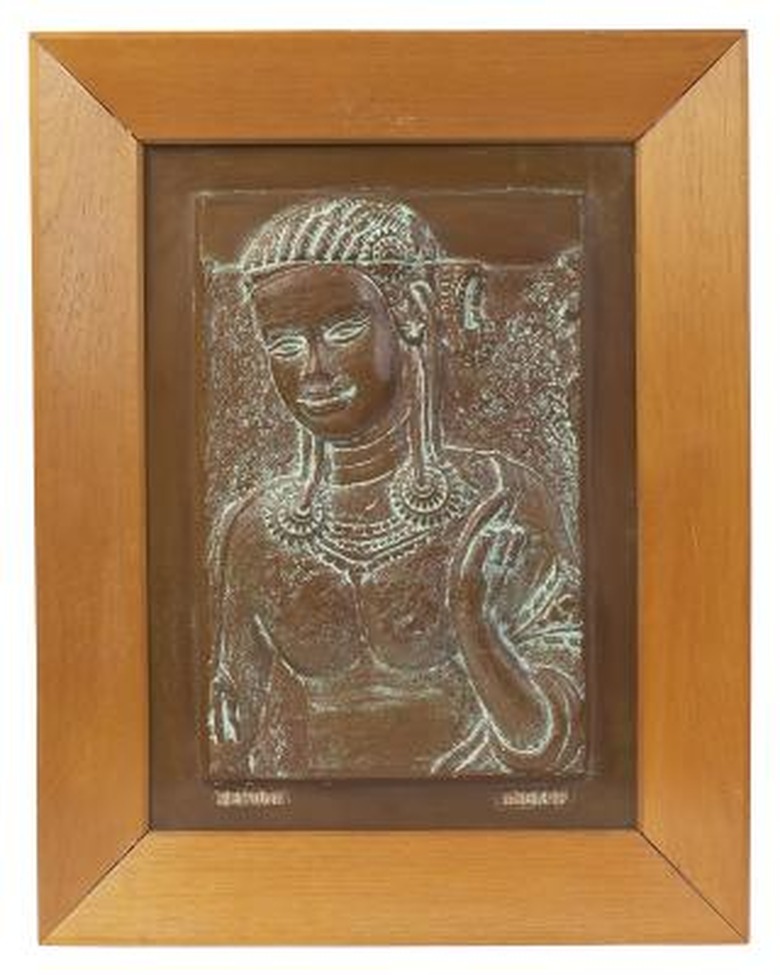Why Does Copper Change Colors Over Time?
Copper is used for electrical wiring, for plumbing, for the manufacture of alloys, in fungicides and in insecticides. It is also used in art and in coinage. Copper is recyclable.
Freshly formed, copper is a beautiful rosy-pink color. Before long, however, it changes to a darker russet-brown. Under certain circumstances, it may turn red, black or blue-green.
Environment
Environment
Copper metal that is required to maintain its color may be treated with an organic coating. Single-strand copper wire for electrical purposes does not usually tarnish enough to warrant special treatment. However, fine, multistranded copper wire is usually wrapped with layers of insulating materials. If the wire is kept wrapped, oxidation is quite low, and its color is maintained. Naked copper, however, will inevitably change color according to its particular environment.
Attack
Attack
There are two common forms of attack upon metals. In the milder case, a metal may tarnish. "Tarnish" is a thin coating on the surface of a metal and is usually very uniform and does not often destroy the intended purpose of the metal. "Corrosion," on the other hand, is often not uniform, but may cause pits and may reach such proportions as to destroy the metallic object so that it cannot be used for its intended purpose.
Tarnish
Tarnish
In dry air, even tarnishing takes place quite slowly; however, with the usual atmosphere around us, the humidity accelerates the tarnishing process. The lowest oxide level of copper is cuprous oxide, or cuprite. Its color is pink. Barely noticeable at first, a penny becomes darker over time due to the tarnish layer thickening, as well as the continued oxidation to the black cupric oxide, tenorite.
Corrosion
Corrosion
Over time, and upon repeated or prolonged exposure to moisture in the presence of dissolved acidic substances, such as carbon dioxide and the polluting substances found in acid rain, tarnished copper turns green. Among these acid substances are the oxides of sulfur and the oxides of nitrogen. Reacting with moisture, they form dilute solutions of strong acids.
Patina
Patina
These acids interacting with the tarnished copper produce predominantly three minerals responsible for the blue-green to gray-green patina found on outdoors bronze statues and copper coins lying in a gutter, namely:
Azurite Cu₃(CO₃)₂(OH)₂ Malachite Cu₂CO₃(OH)₃ Brochantite Cu₄SO₄(OH)₆
These three highly prized minerals coat some of the most iconic statues in the world.
Cite This Article
MLA
Summers, Vincent. "Why Does Copper Change Colors Over Time?" sciencing.com, https://www.sciencing.com/copper-change-colors-over-time-5377621/. 24 April 2017.
APA
Summers, Vincent. (2017, April 24). Why Does Copper Change Colors Over Time?. sciencing.com. Retrieved from https://www.sciencing.com/copper-change-colors-over-time-5377621/
Chicago
Summers, Vincent. Why Does Copper Change Colors Over Time? last modified March 24, 2022. https://www.sciencing.com/copper-change-colors-over-time-5377621/
